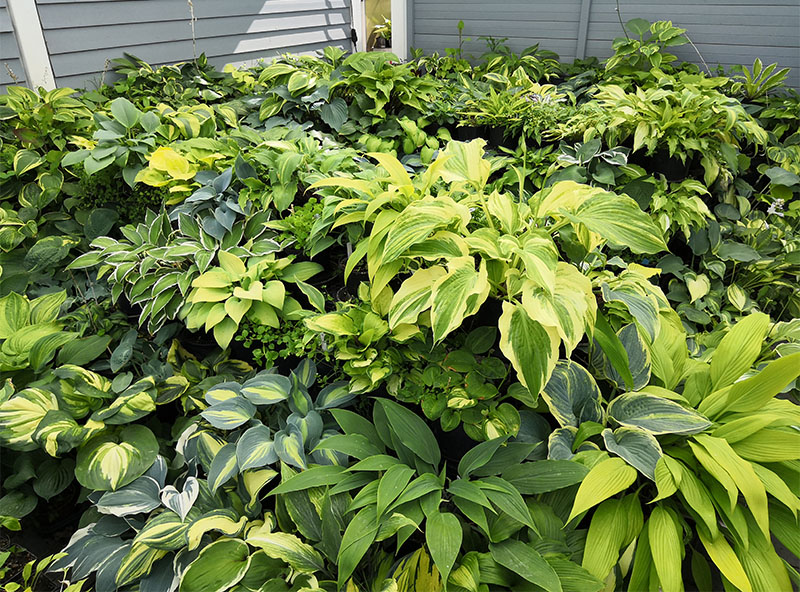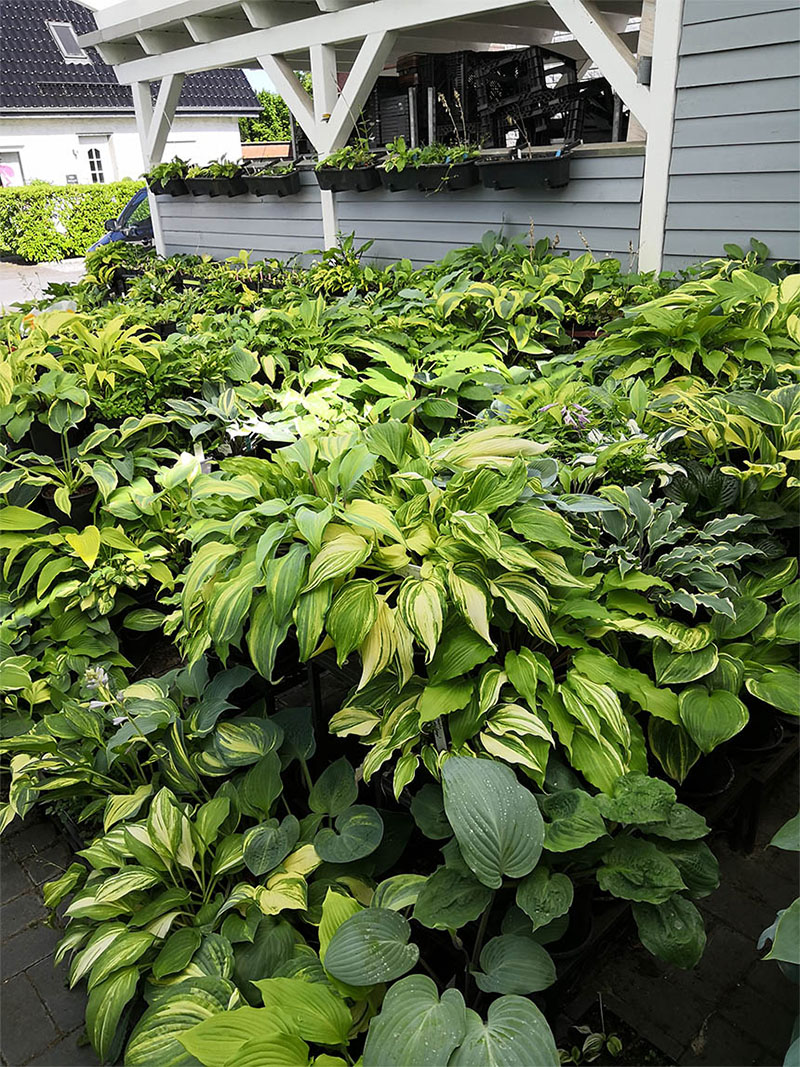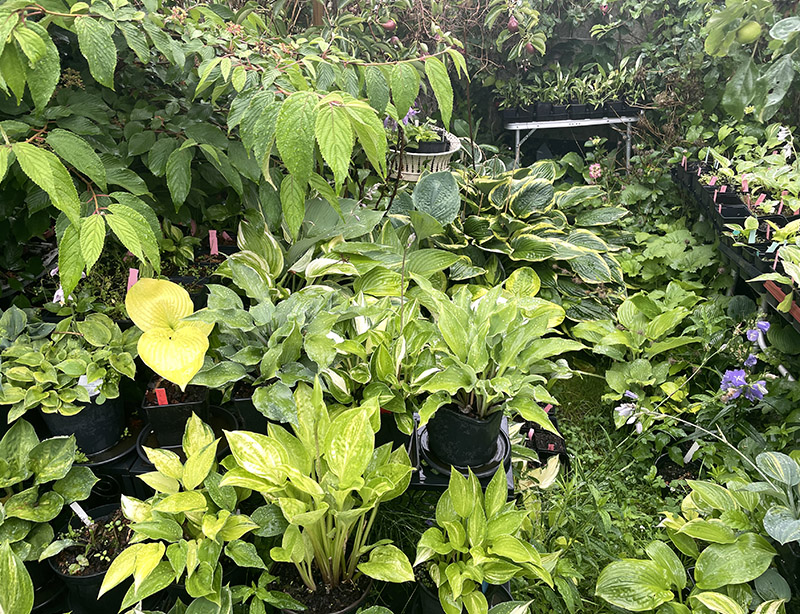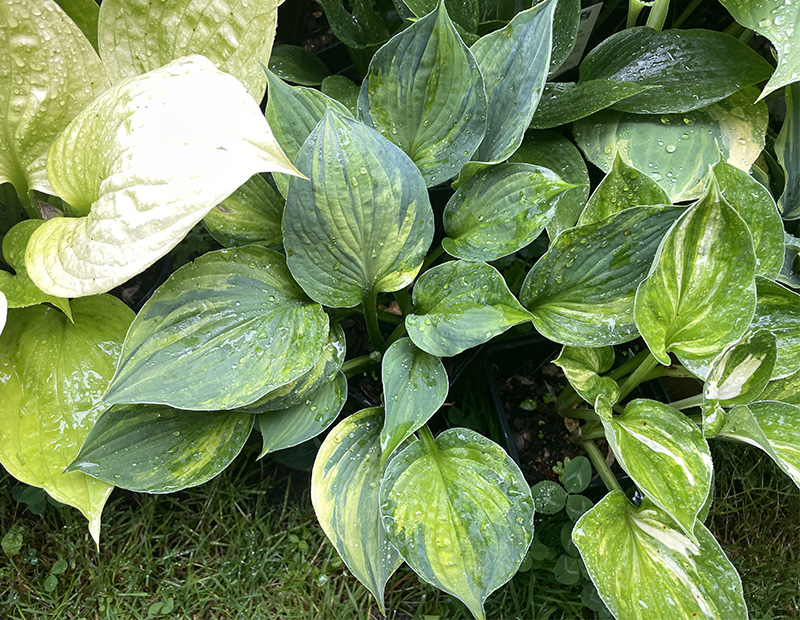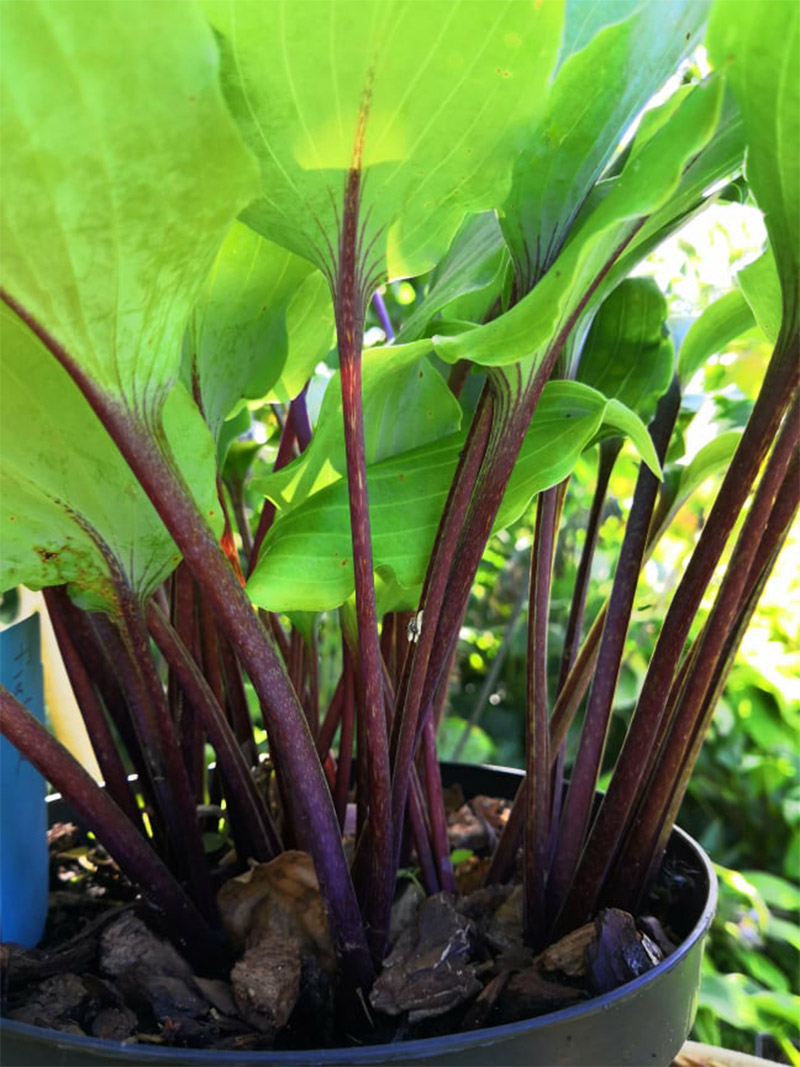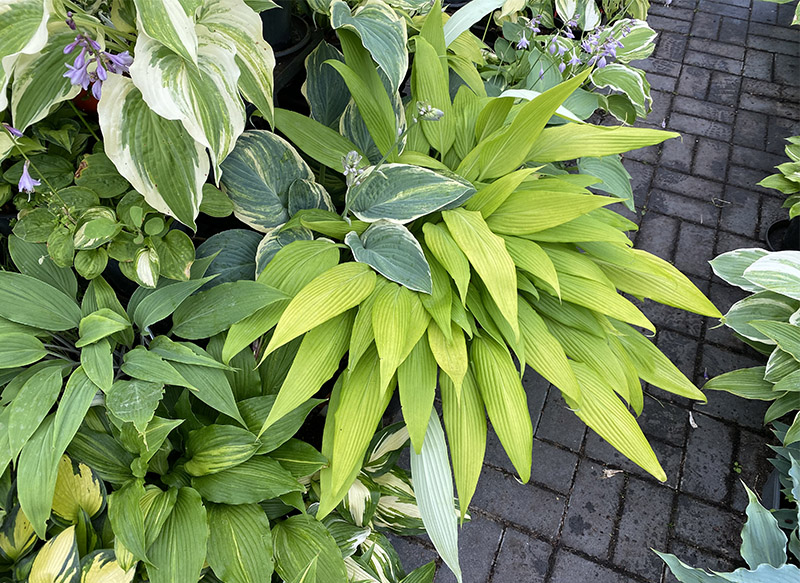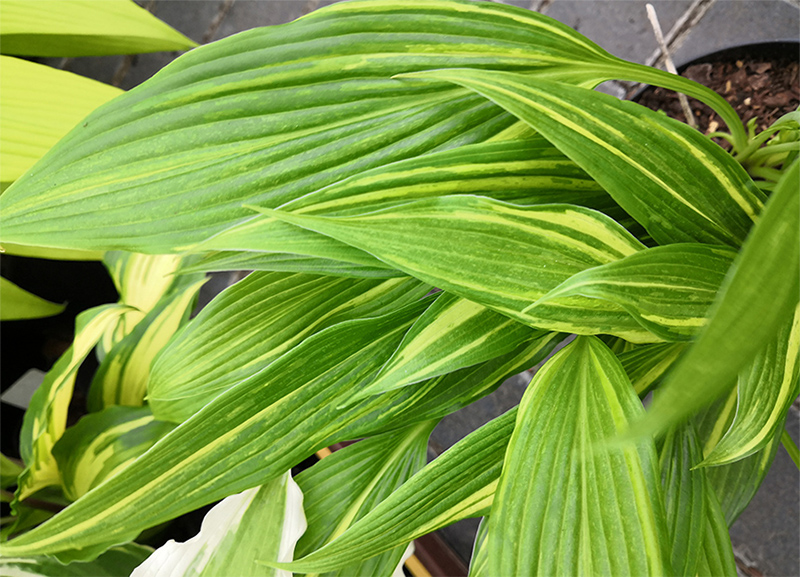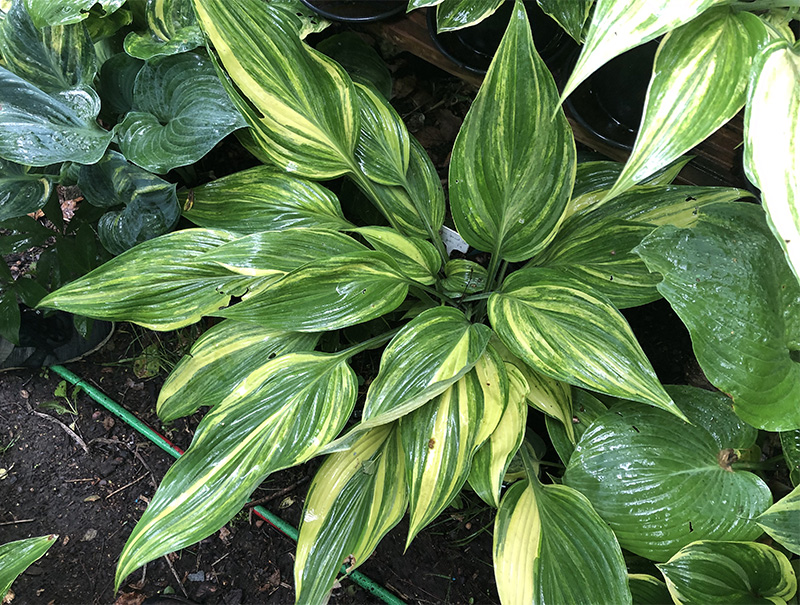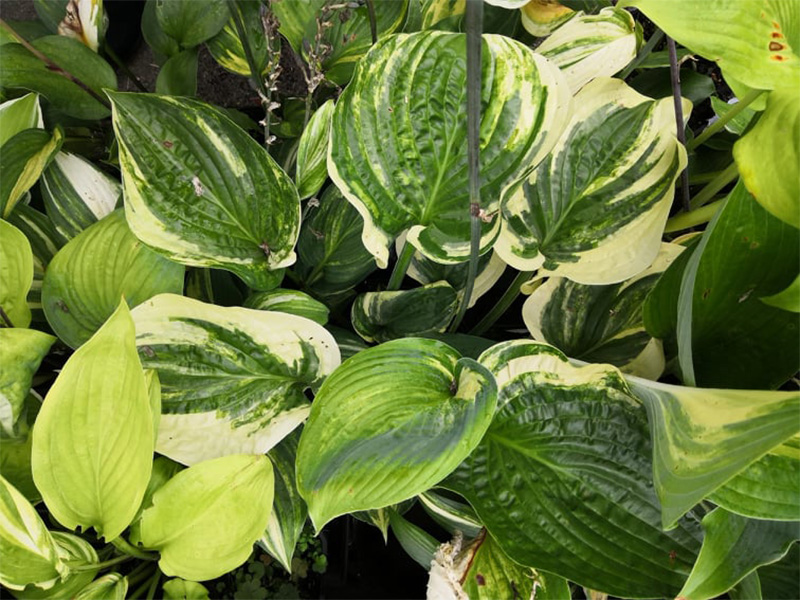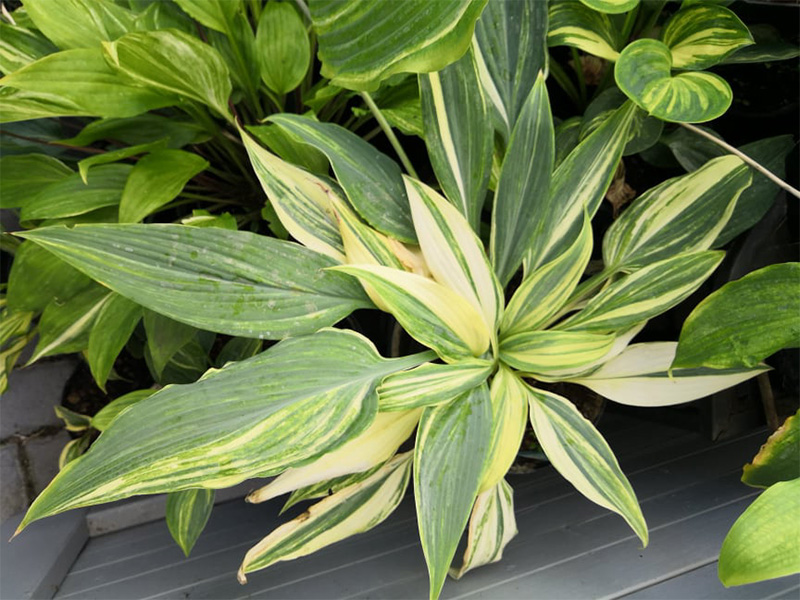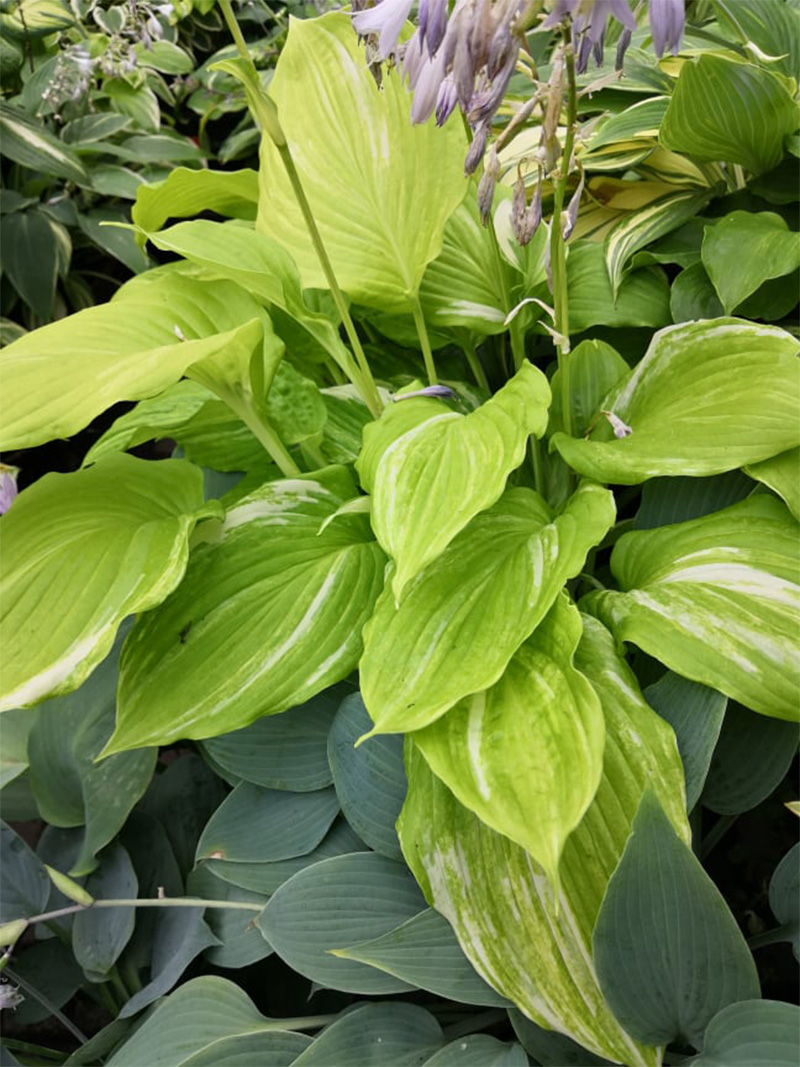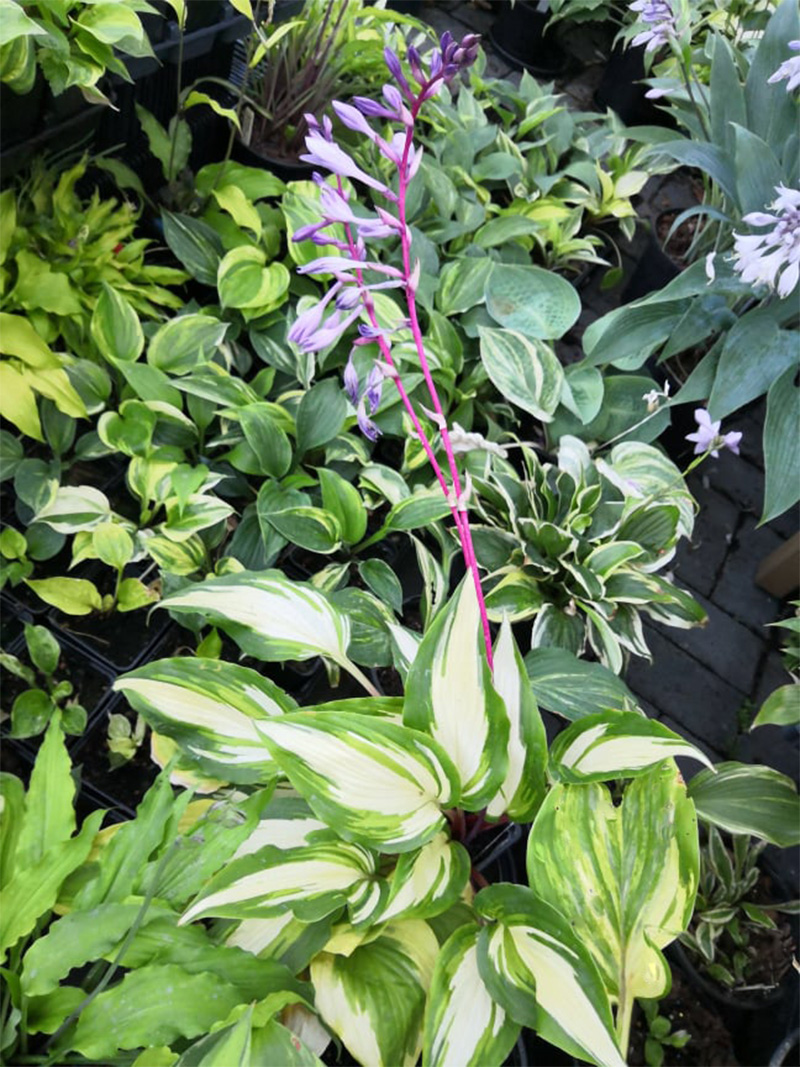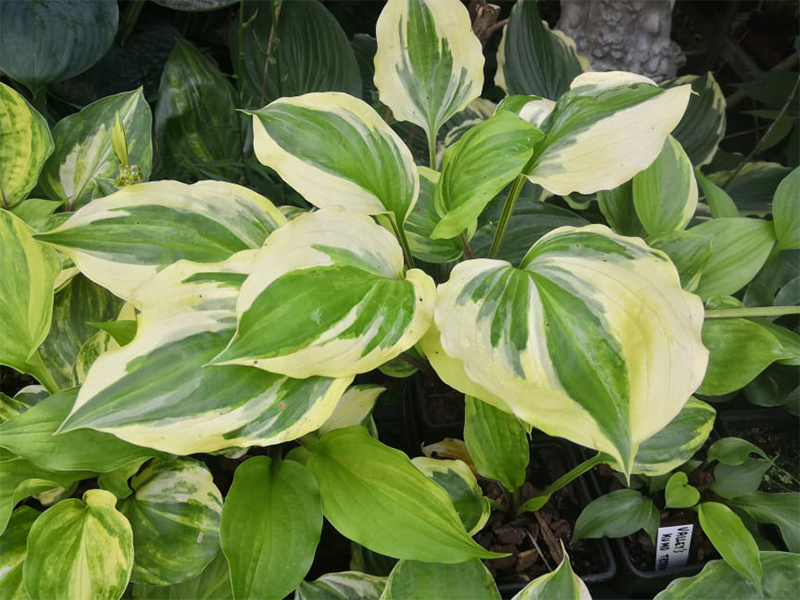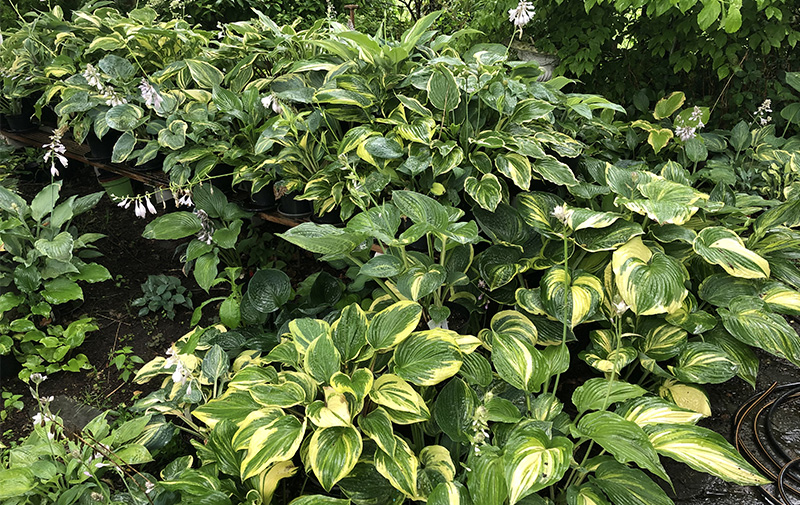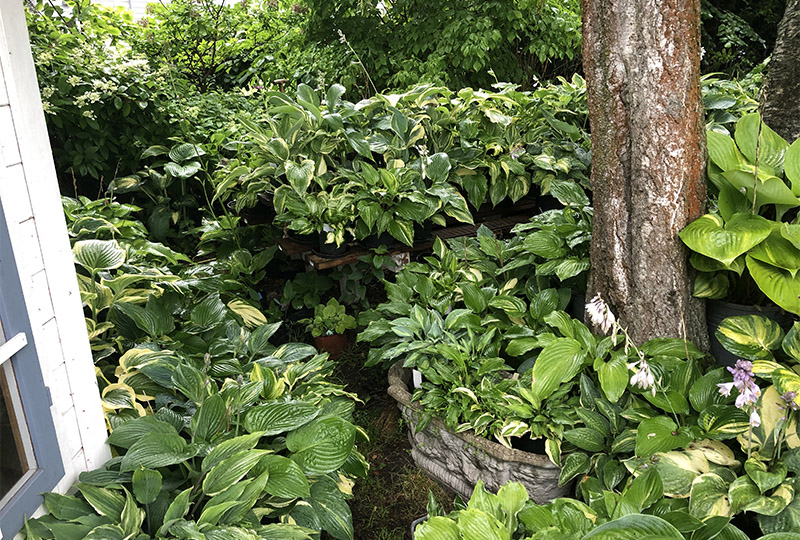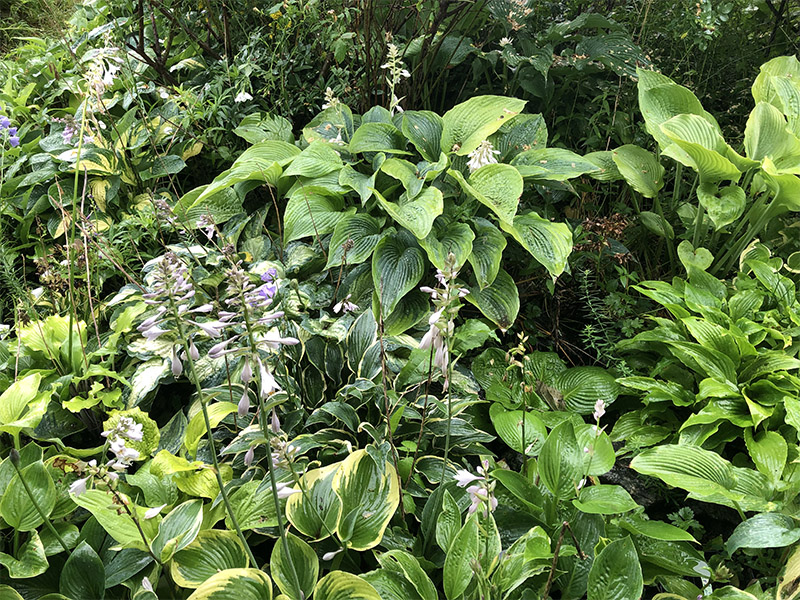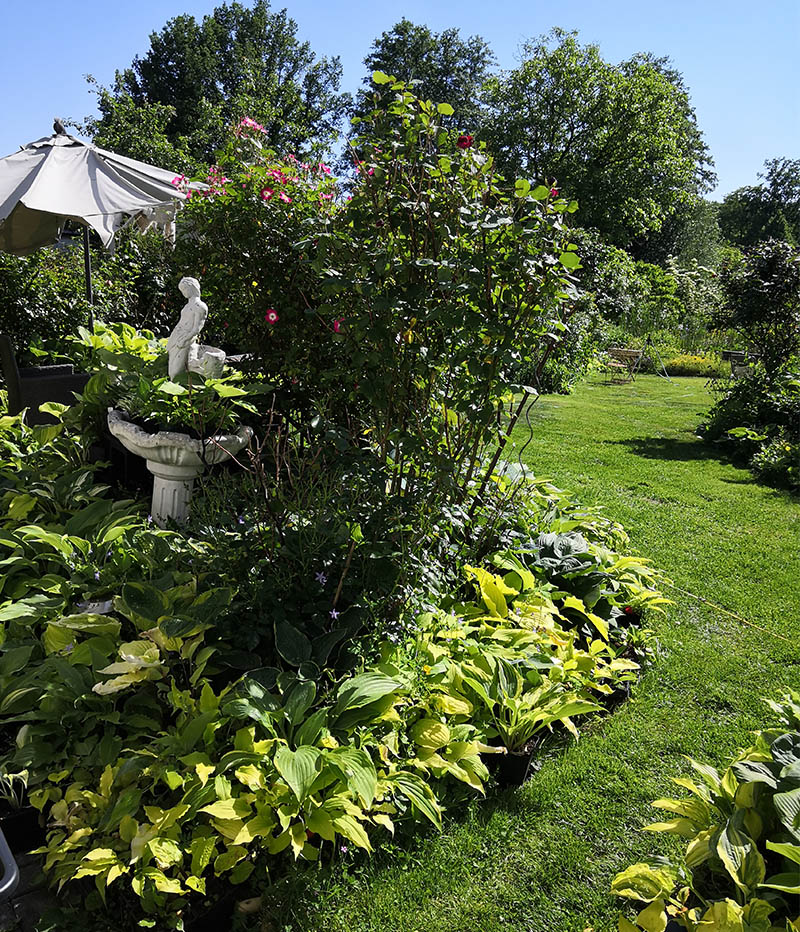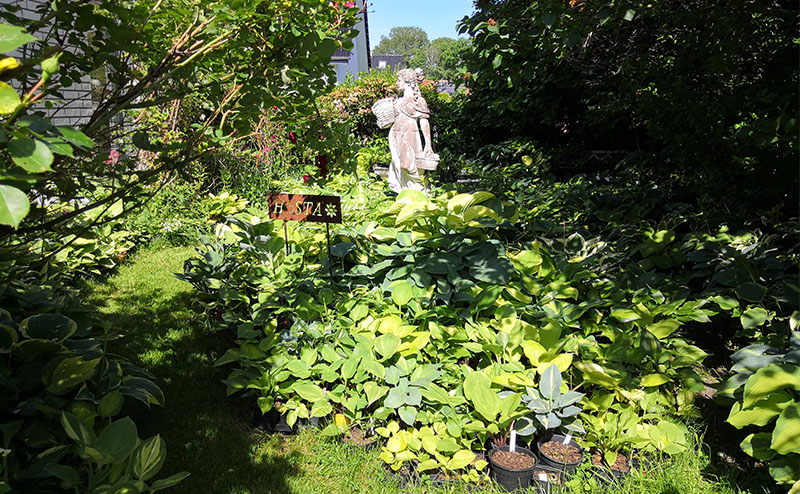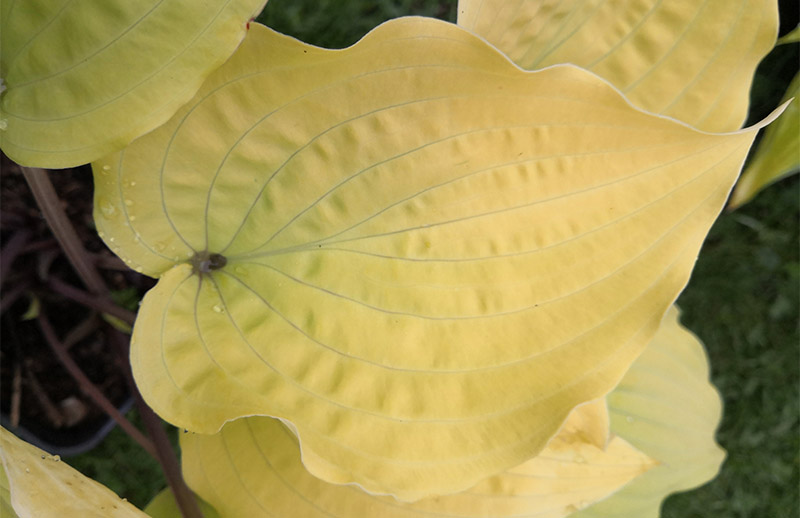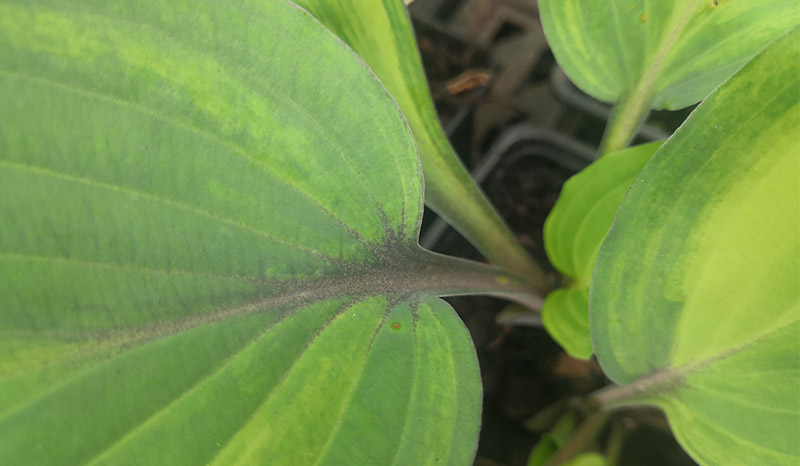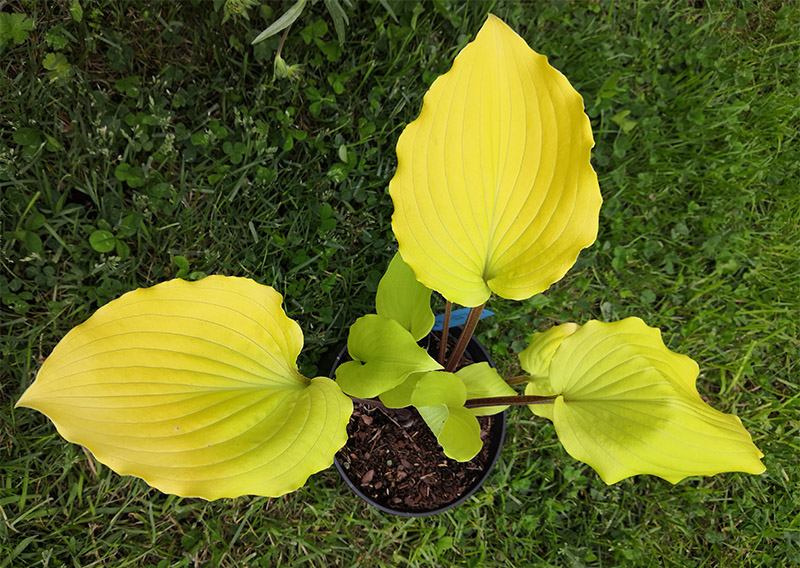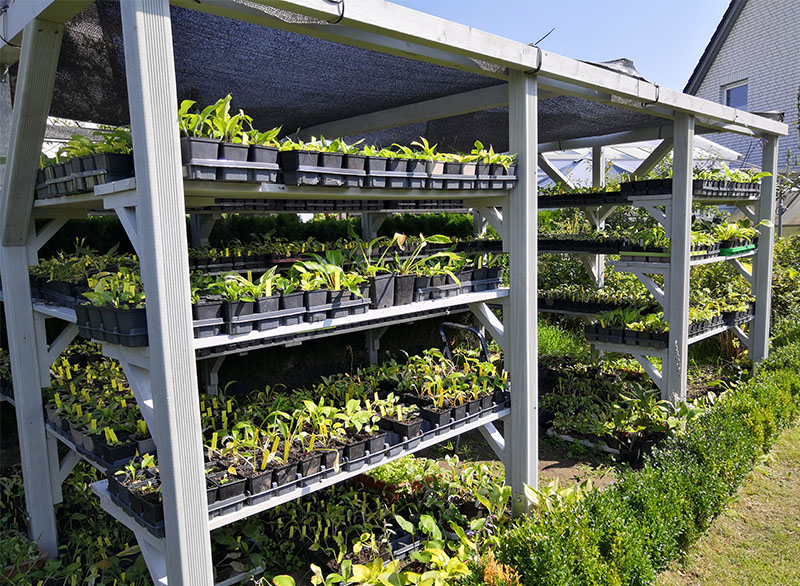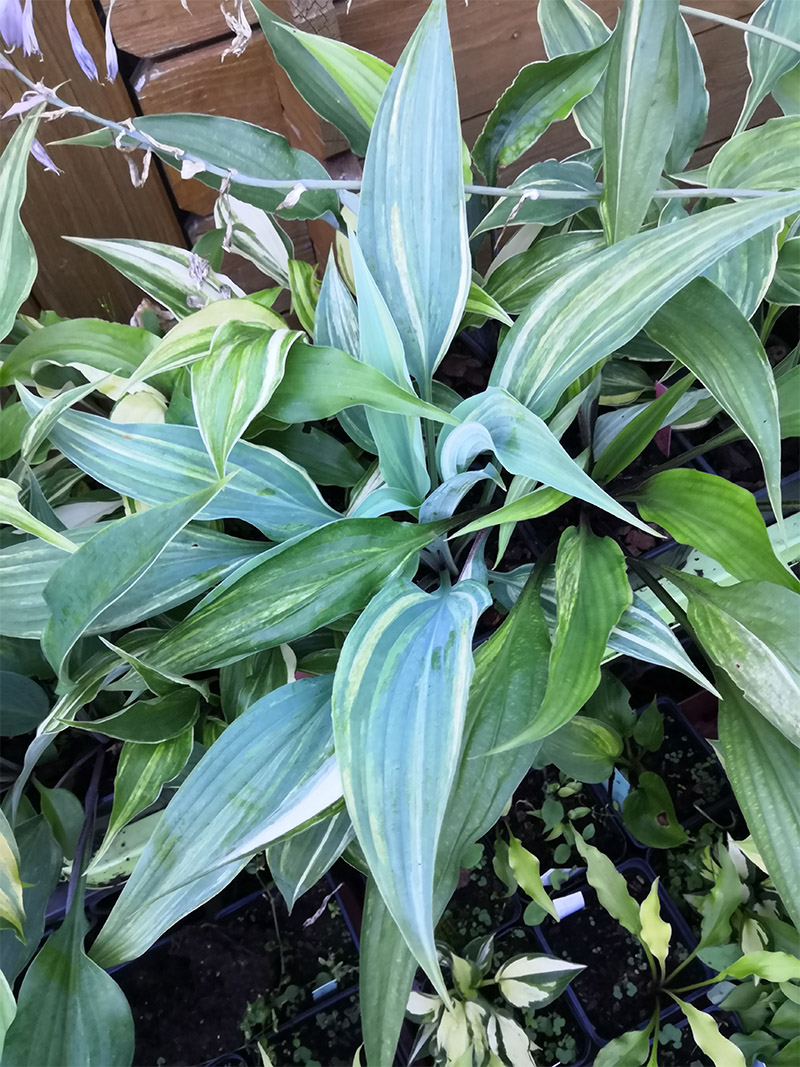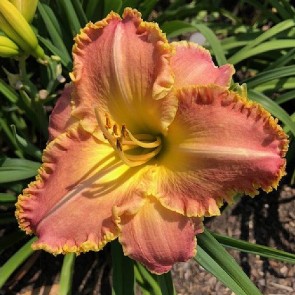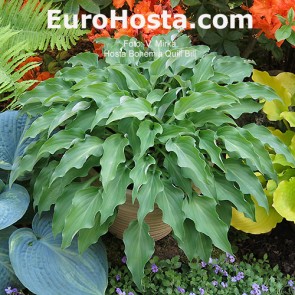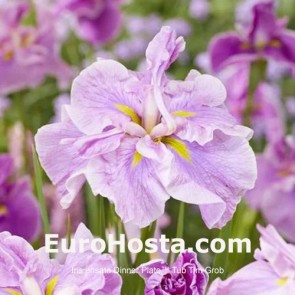Hostaholic - Christina Brinkmann | Text and Foto: Eurohosta + Christina Brinkmann, September 2021
BLOG: All Articles - Eurohosta Blog
|
In the next part of our series, in which we invite you to the gardens of hosta and daylily growers, we visited the Christina Brinkmann’s hosta kingdom from Gütersloh, Germany. Although it rained heavily during our visit in the summer of 2021, it did not spoil our experience in a beautiful garden full of wonderful hostas. We hope that at least few photos will give you an idea of how amazing is this atmosphere, which you can feel in her garden. This garden is full of fresh verdure, peace and quiet shadow corners. Due to the rain, which drove us inside the house over time, we have continued our discussion about hostas around a cup of tea and delicious cakes. Your garden is wonderful. It is obvious you really love flowers... "I have been fascinated by flowers and plants since my childhood. In the early years I planted and sow different kinds of annuals and perennials in the garden of my parents." However, there are mainly hostas predominating in your garden. They are everywhere. How many hostas do you have? "It lasted until 2000 when my husband and I built our house in which I could begin to create and maintain my own garden. There I started getting to know the hostas, plants suitable especially for shady places, and I became to love them. I bought lots of new cultivars every year and our garden was overcrowded during a short time. I was so happy that we succeeded in buying a neighboring property with an area of 2,000 square meters in 2011. Finally, I had enough room. Now, 10 years later, I have again problems with space, because my collections of hostas grew up to 2,900 cultivars and innumerable amount (about 10,000!) of seedlings."
From left, Zuzana Zúbriková, Dana Zúbriková, Christina Brinkmann, Milan Zúbrik. photo: Eurohosta Do you also deal with hybridizing hostas? „I started to deal with hybridizing hostas in the year 2012 or 2013. In that time Jan van den Top (well-known hosta grower from Netherlands) distributed seeds of streaked hostas to members of the “Streaked Hostas” internet forum. Then I began to pollinate and cross hostas by myself to achieve my own cultivars. Last winter, for example I planted 50,000–60,000 seeds inside a house with 24-hour artificial lighting. During the first two years, I tried to get my own streakers (streaked hostas) to use them as mother plants, but already in that time I really liked those with long leaves. I was always sad when late frosts damaged my favorite plants in the spring. Except that, there was still less shady areas in the garden. Therefore, I intensively began to deal with tetraploid hostas, as I have known they have better resistance to environmental influences. Thanks to their thick leaves, they are less affected by frost and are also more resistant to the sun. In addition, their flowers are much larger and more beautiful, and the color of the leaves is often more intense. However, streaked tetraploid cultivars could not be reachable anywhere. So in 2015, a lucky coincidence helped me, when my hosta named “Twilight” created a spontaneous streaked sport and I was able to successfully pollinate its flowers with other pollen from tetraploids. That was the beginning of my own tetraploid lines."
Hostas - the queens of the shade beds. photo: Ch. Brinkmann So tetraploid hostas are your biggest love? "Yes, but in addition to tetraploid hostas, I still love streaked ones and those with long leaves. My growing goals for the future are streaked hostas with red stems, those of all sizes and colors with long leaves, and especially further breeding of polyploid hostas." Where, except your garden, can people meet your hostas? "Because of internet forums were gradually closed, I registered on Facebook in 2015. I learned a lot of new things in every group about the hostas, I exchanged ideas with other who love them. Through my friend Rik Desmedt (hosta grower from Belgium), I met the European “Hosta guru” Danny van Eechaute (hosta grower from Belgium) and I was excited when he expressed interest in my hostas by taking them through the meristems in the laboratory. Some hostas are even on the market: Chris’ China Star, Chris’ Darkest Purple, Chris’ Moving Ruffles, Chris’ Tropical Sundown, Chris’ Little Jewel, Chris’ Small Talk and Chris’ Little Watermelon. I expect the long-awaited Chris’ A lalalala long will be on the market next spring. Other varieties will follow, including the first probably tetraploid cultivar. In the laboratories, there are more than 30 of mine already propagating in this way (in the form of tissue cultures). If you want to know more about me and my hostas, I invite you to the Facebook group “Chris’ Sämlinge, Streaker und Sorten”. There you can find many photos of my hostas. Some of them are even on the Hosta Library website." Our visit is over, but we will keep fond memories of a pleasant meeting, a beautiful garden, exceptional hostas and fruitful discussion. The diversity in shades of green, blue, yellow and white in many combinations and shapes seems to be almost endless. Dear Christina, thank you for allowing us to enter your world of hostas, and also other people to meet your “paradise garden”, at least for a while, through your storytelling and photographs. We wish you much success in achieving your breeding goals and that your plants will delight gardeners and perennial lovers worldwide.
Every space in the garden is used for planting hostas. photo: Ch. Brinkmann
Shady corners in the garden. photo: Eurohosta
Tetraploid Hosta. photo: Eurohosta
Hosta Chris' Red Lightning. photo: Ch. Brinkmann
Yellow hosta Chris' A lalalala long in the middle. photo: Eurohosta
Hosta Chris' Skinny Love. photo: Ch. Brinkmann
Hosta Chris' Special One. photo: Eurohosta
Hosta Chris' Jekyll and Hyde. photo: Ch. Brinkmann
Hosta Chris' Hattori Hanzo. photo: Ch. Brinkmann
Hosta Chris' Apple Stripes. photo: Ch. Brinkmann
Hosta Chris' Pretty Pink Legs. A sport from Hosta Chris' No 1. photo: Ch. Brinkmann
Hosta German Mood Maker. Probably tetraploid. photo: Ch. Brinkmann
The right location for hostas. photo: Eurohosta
Hostas love shade... photo: Eurohosta
Hostas feel happy in these areas. photo: Eurohosta
Every space in the garden is used for planting hostas. photo: Ch. Brinkmann
The garden full of hostas. photo: Ch. Brinkmann
Hosta Chris' Gelbes Gold. photo: Ch. Brinkmann
Hosta Chris' Really Phat. photo: Ch. Brinkmann
Hosta Chris' Tropical Sundown in the spring. photo: Ch. Brinkmann „ The new pergola protects seedlings. photo: Ch. Brinkmann
Future cultivars with long, variegated leaves with red petioles. photo: Ch. Brinkmann © This text and photos are protected by intellectual property rights under the Law no. 618/2003 Coll. (the Copyright Act). |
||||


